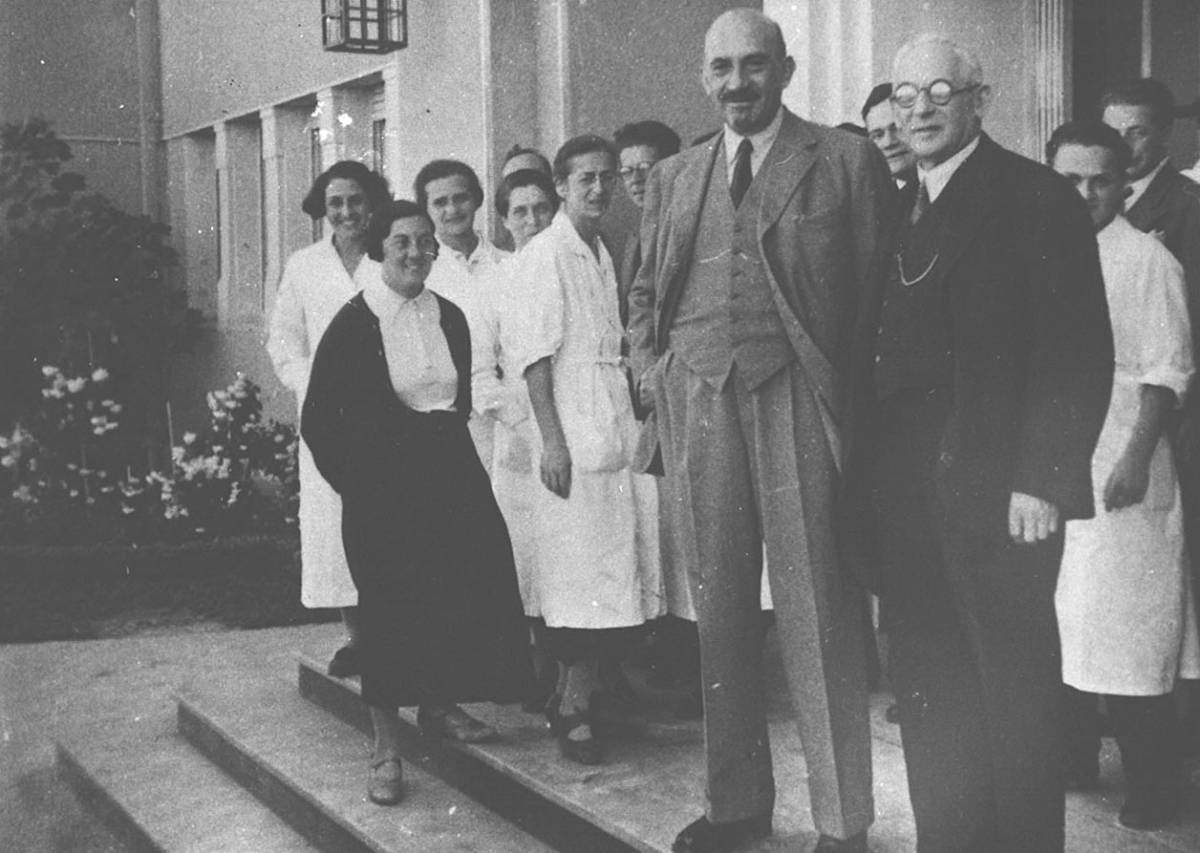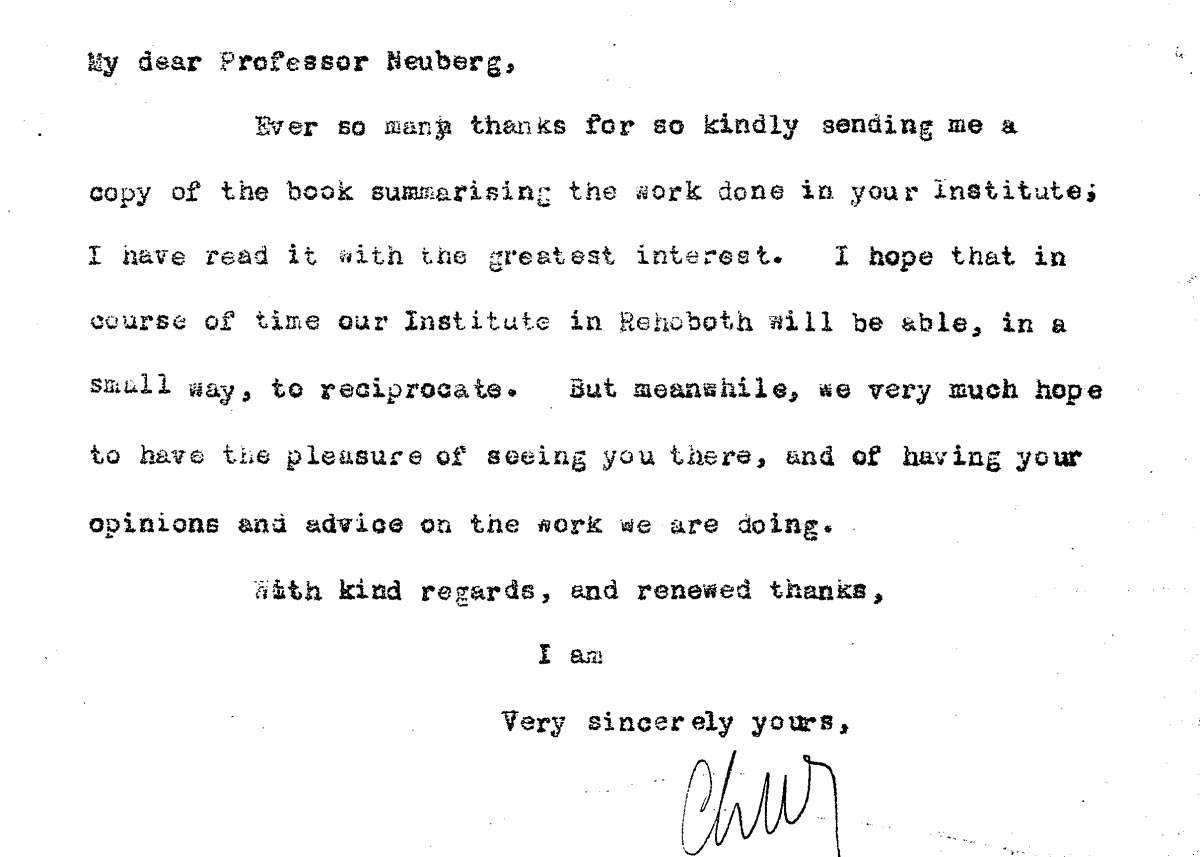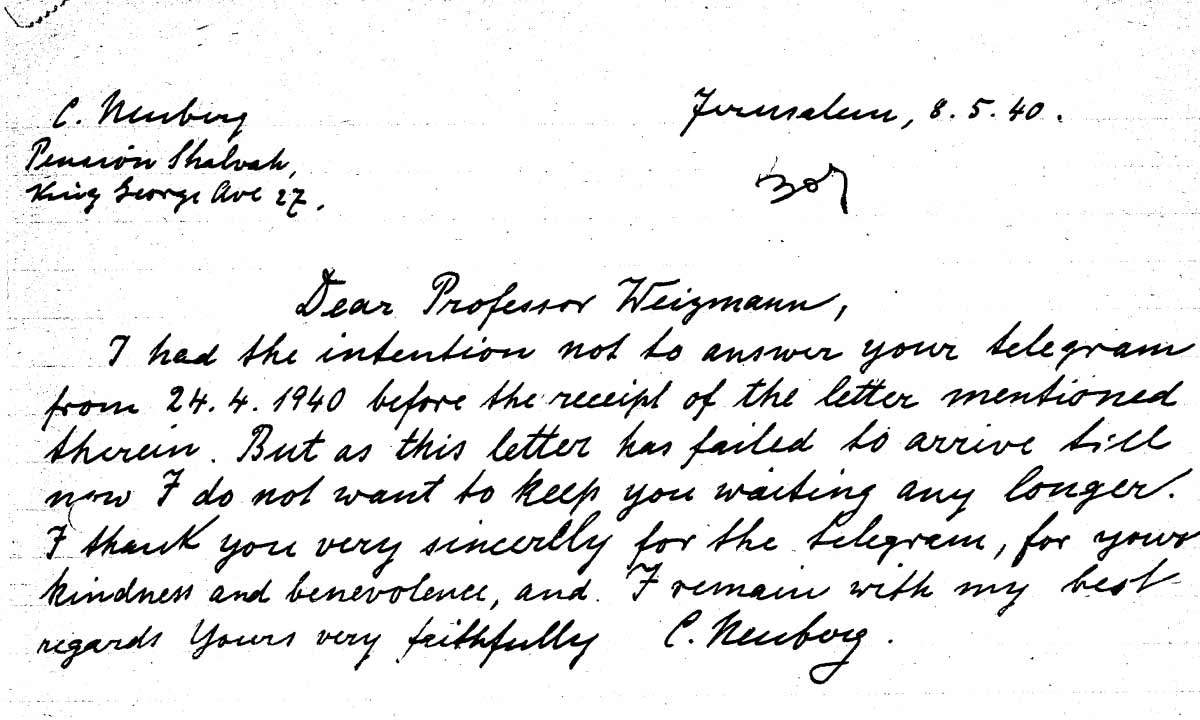Are you a journalist? Please sign up here for our press releases
Subscribe to our monthly newsletter:

It was June 28, 1914. Two shots fired by Gavrilov Princip, killing the Austro-Hungarian Archduke Franz Ferdinand and his wife, sparked the outbreak of WWI. These were the opening shots of an arms race between England and Germany that would last through the next world war. Two friends – chemists and colleagues – aided their countries’ war effort on opposing sides. Chaim Weizmann helped the English, Carl Neuberg the Germans.
At the time, Weizmann was invested heart and soul in the establishment of a research institute in Palestine – what would eventually become the Hebrew University. Several weeks prior to the war, he had been in Berlin to promote the University and invite top scientists to come for short periods to lecture or give courses. These included Paul Erlich, Richard Willstätter, August von Wasserman and Carl Neuberg, who personally agreed to come to Jerusalem.
Weizmann was also the head of a research lab in the University of Manchester; his research focused on a chemical process for producing synthetic rubber – a highly sought after material. In the course of this research, he developed a method for breaking down the carbohydrates in corn into acetone and butyl alcohol, using bacterial fermentation. Before the war, however, there was no practical use for these products, and the university administration refused Weizmann’s request to patent the process. Weizmann then proceeded with the task of requesting a patent on his own.
The field of chemistry changed with the advent of WWI. The import of materials from Germany and Central Europe to England and its allies ceased. One of those materials, calcium acetate, was used to make the acetone needed as a solvent in the process of producing nitrocellulose, which is then used to manufacture the explosive, cordite. Cordite was the preferred gunpowder in the artillery, as it heated the gun barrel less and did not produce smoke when it burned, so the gun’s position was not revealed when it was fired. Weizmann approached the head chemist in charge of producing the nitroglycerin in the royal munitions factory and told him about his experiments in producing large amounts of acetone from corn. The head chemist jumped at the idea, and Weizmann’s fermentation process was saved from oblivion -- sort of: The process became classified as a state secret and Weizmann halted the patent request.
As Weizmann was fermenting acetone in his lab, Carl Neuberg, a German Jew who was eventually nicknamed the “father of biochemistry,” was heading his own lab in the biochemistry department of the Kaiser Wilhem Institute for Experimental Therapy. To aid the German war effort, Neuberg was also experimenting with bacterial fermentation; he developed a method of breaking down plant sugars to produce glycerin and acetaldehyde. The glycerin was then used to produce the explosive trinitroglycerin, TNG.
At the end of the war, in recognition of Weizmann’s services, the Balfour Declaration was issued, formalizing the Jews’ right to a homeland in Palestine. Neuberg was decorated and made director of a new biochemistry institute in the Kaiser Wilhelm Institute for Biochemistry in Berlin.

These two men – patriots on opposite sides of a bloody conflict – each independently developed methods used to manufacture explosives, although these also laid the groundwork of modern biotechnology. Yet the letters between the two reveal deep friendship and mutual admiration that transcended nationality. Neuberg helped Weizmann recruit scientists to the Hebrew University, among them Prof. Ernst David Bergmann, who would become Weizmann’s right-hand man and help him found the Daniel Sieff Research Institute. They exchanged personal news and discussed their research as well; in one letter Neuberg thanked Weizmann for visiting him. And according to the correspondence, they shared bacterial cultures as well as news. Weizmann made plans to visit Neuberg’s institute in Germany, and Neuberg promised to find him lab space in 1933. (Illness in his family prevented Weizmann from going.) Neuberg received invitations to lecture at the Hebrew University and the Sieff Institute.
The letters reveal that Neuberg started making plans as early as 1934 to visit the Sieff Institute, and various subjects were suggested for lectures. He did indeed visit Rehovot and spend time with Weizmann in 1935, though the letters do not reveal much about the trip. By this time, things were becoming progressively more difficult for Jews in Germany. At the end of August, 1939, two days before the declaration of the World War II, after endless hesitations and delays, Neuberg left Germany. He intended to take up a position Weizmann had promised him in the Hebrew University. But he went first to Amsterdam, to the lab of a friend, Prof. Claude Fromageot, where he worked to earn the price of a ticket to Palestine.

When Neuberg arrived in Palestine, problems arose with his employment. Weizmann suggested that in addition to working at the Hebrew University, he take on a part-time position, two or three days a week, overseeing biochemical and bacteriological research at the Sieff Institute. For this he would receive an annual salary of 300 lira sterling.
Neuberg began working at the Institute in July 1940. Eight months later, in March, 1941, Weizmann received a message that Neuberg had suddenly packed up and left for the United States. There he could be close to his daughters, but as he was already 64, academic positions were closed to him. Neuberg worked until his death in 1956 as a consultant to various industries and universities.
This is the story of two men who, even as they helped write the history of the 20th century, were swept up in its currents, often in opposite directions. Even though they remained friends and close colleagues, Weizmann and Neuberg never really managed to work together.